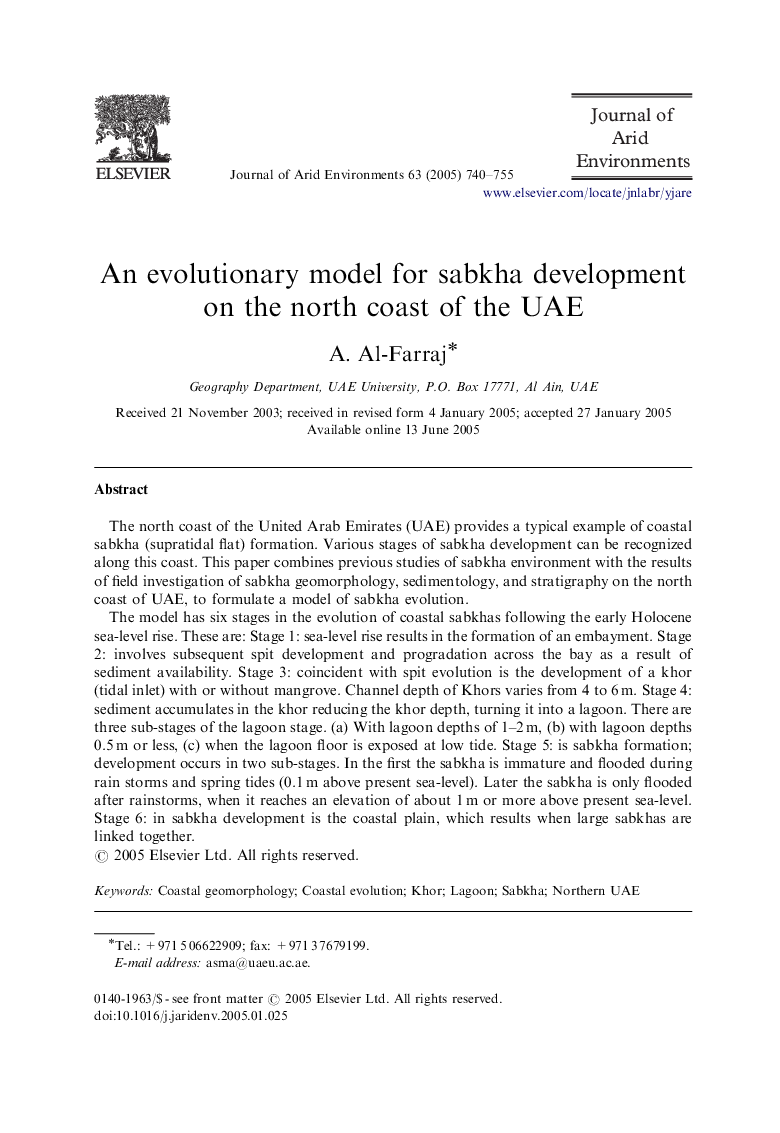| Article ID | Journal | Published Year | Pages | File Type |
|---|---|---|---|---|
| 9447856 | Journal of Arid Environments | 2005 | 16 Pages |
Abstract
The model has six stages in the evolution of coastal sabkhas following the early Holocene sea-level rise. These are: Stage 1: sea-level rise results in the formation of an embayment. Stage 2: involves subsequent spit development and progradation across the bay as a result of sediment availability. Stage 3: coincident with spit evolution is the development of a khor (tidal inlet) with or without mangrove. Channel depth of Khors varies from 4 to 6Â m. Stage 4: sediment accumulates in the khor reducing the khor depth, turning it into a lagoon. There are three sub-stages of the lagoon stage. (a) With lagoon depths of 1-2Â m, (b) with lagoon depths 0.5Â m or less, (c) when the lagoon floor is exposed at low tide. Stage 5: is sabkha formation; development occurs in two sub-stages. In the first the sabkha is immature and flooded during rain storms and spring tides (0.1Â m above present sea-level). Later the sabkha is only flooded after rainstorms, when it reaches an elevation of about 1Â m or more above present sea-level. Stage 6: in sabkha development is the coastal plain, which results when large sabkhas are linked together.
Related Topics
Physical Sciences and Engineering
Earth and Planetary Sciences
Earth-Surface Processes
Authors
A. Al-Farraj,
